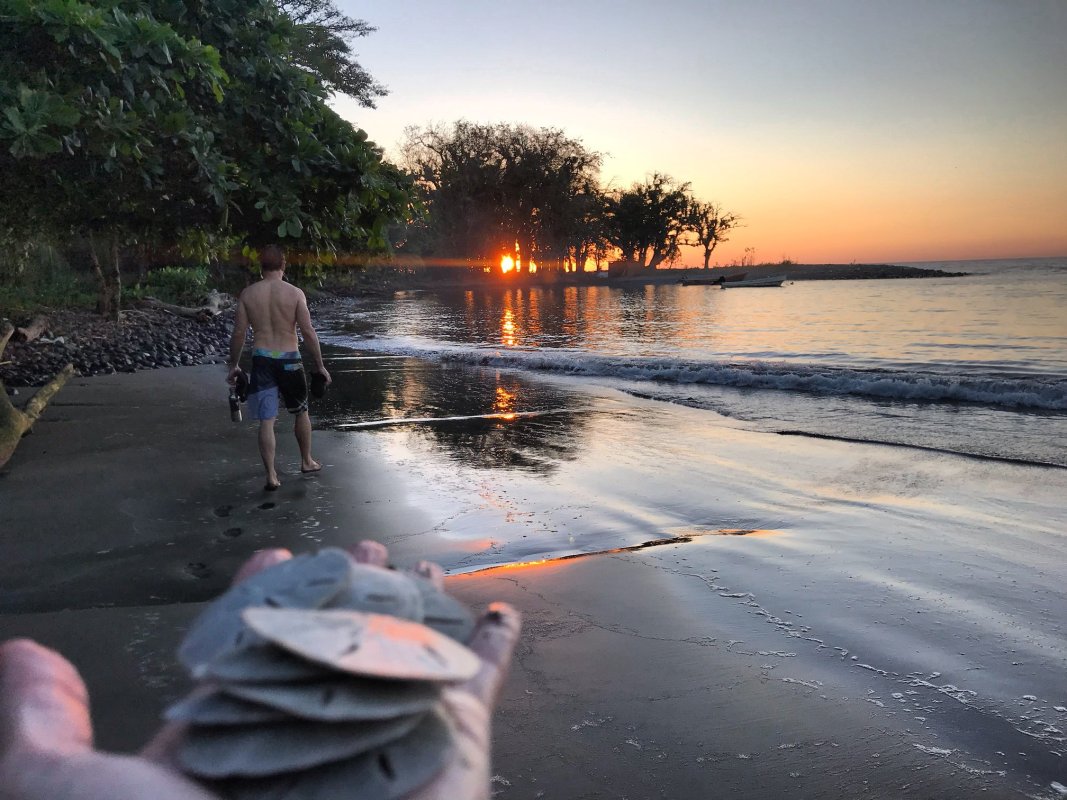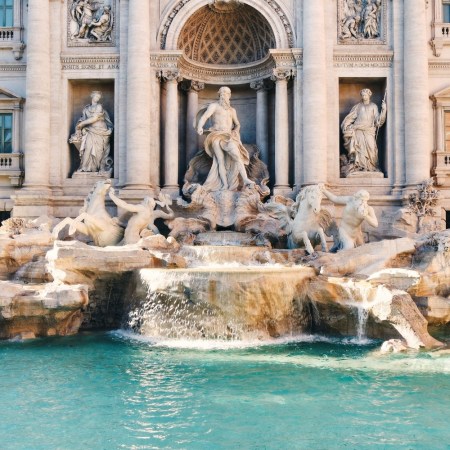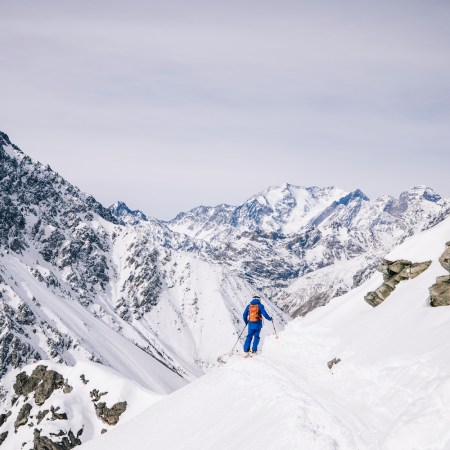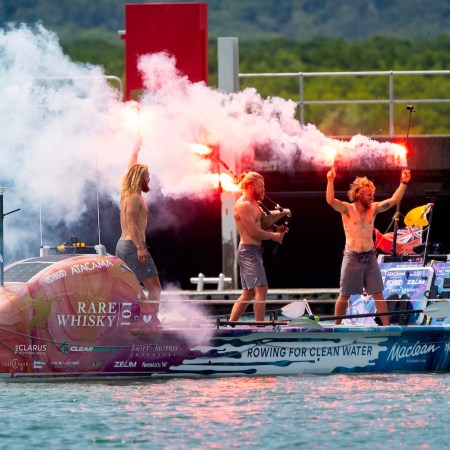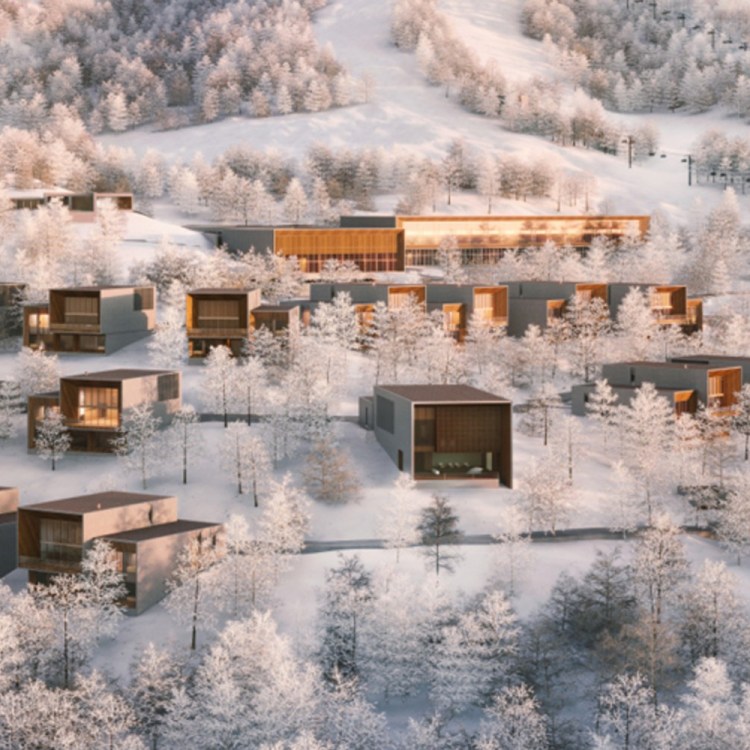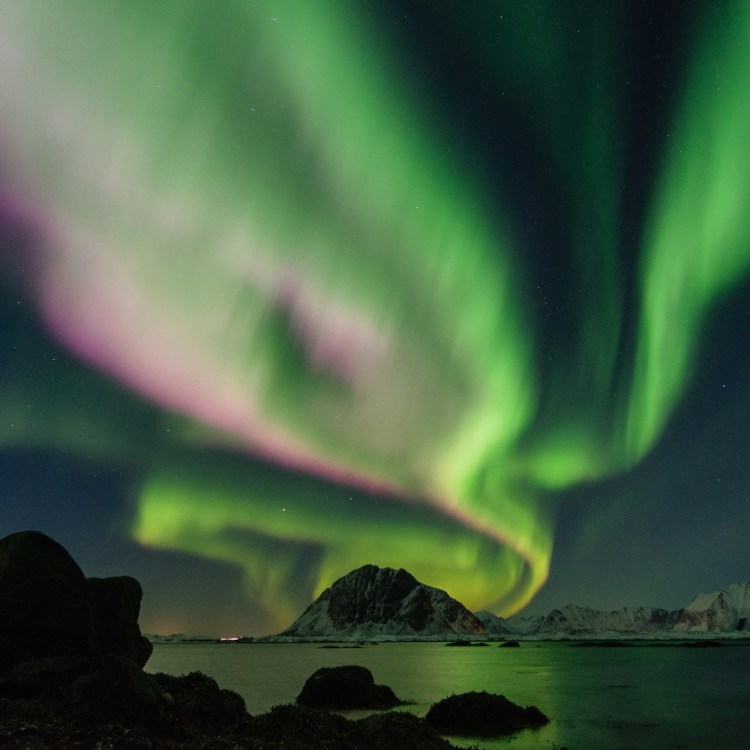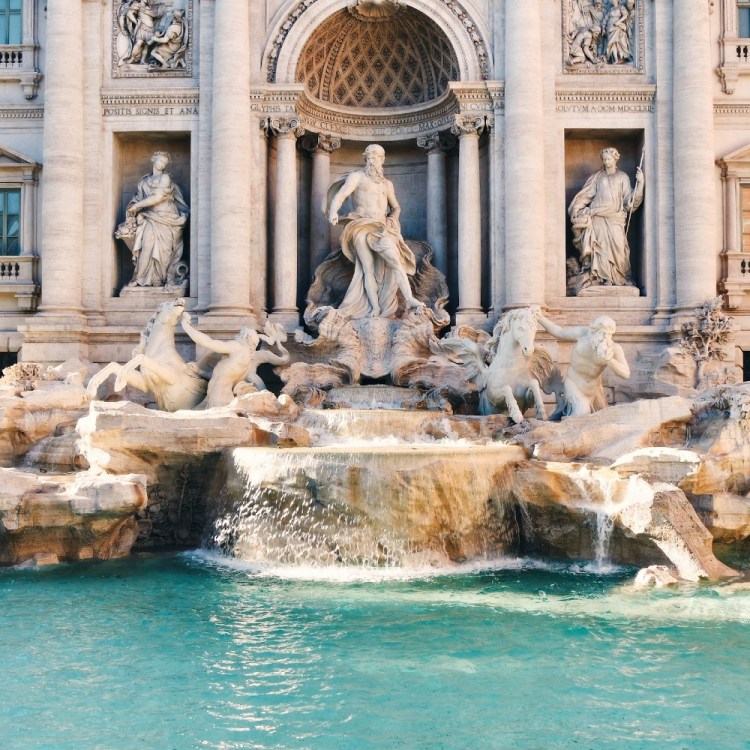Panama is still a few small steps off the beaten path as far as Central American countries go, despite Van Halen’s best efforts to promote it. To be fair, that song was about fast cars and a stripper from Arizona but, none the less, people still associate it with the country.
PTY in Panama City is one of the biggest airports in Central America and a jumping off point for transfers to South America. The good news is there are a lot of direct flights from the U.S. and most airlines fly there. We chose Copa…maybe because it sounded romantic like Barry Manilow’s song that starts off about a show girl. Regardless, the reality was much less romantic.
Copa Airlines lost my luggage with all my gear…on a direct flight, which is actually quite impressive. On par with Baxter eating an entire wheel of cheese in Anchorman. Fortunately, the following day, mere minutes before we left the hotel for our next destination,my baggage finally arrived. But it had clearly been opened and dug through—I found my toiletries had been unceremoniously dumped back in at random.
We then flew from Panama City to the city of David on Air Panama, which has no song affiliation but managed to get us and all our gear securely to the destination at the same moment. David is located on the far western, Pacific side of the country and is rapidly developing as both a tourist hot spot, thanks to its with proximity to Costa Rica, and an ex pat enclave, because of its solid infrastructure and affordable lifestyle. Our transfer consisted of a van, a lovely driver, his children, their chihuahua and occasional school children getting on and off…all arranged in advance by the spear fishing/surf camp that was our final destination.
After a few hours in the van and a boat ride through the mangroves, we arrived in Morro Negrito, a (very) rustic camp set on a volcanic island surrounded by black sand beaches, howler monkeys, fireflies and crystal clear water.
This is where the power of the individual human lens comes into play. When traveling, perspective is everything. One person might enter into a remote village and see nothing but poverty and slums. Another might enter the same village and see happy children and innovative ways of living. It truly is all in what each individual chooses to see. Our surf camp was, on one hand, full of dogs with various degrees of mange, but lovely attitudes and begging eyes on point. The showers were cold and there was no electricity. Those are the facts. Our interpretation of the situation, however, was that we enjoyed friendly creatures who we chose not to pet, refreshingly cool bathing options that took the edge off the humidity, and a chance to disconnect from the world and let our eyes adjust to the magnificent stars above.
On Christmas Eve, we wandered to a nearby crescent-shaped beach and went for a swim digging for sand dollars with our toes. The beach was so remote that for hours we played in perfect little peelers, body surfing and floating, listening to howler monkeys wish each other Feliz Navidad without a single other soul making an appearance.
I have never overindulged in shell seeking, but as the tide went out it revealed hundreds of sand dollars like snowflakes in the black volcanic sand and I was greatly tempted. Still, my greed ebbed away and I capped myself at 30. A marvelous discovery was that a Pringle’s can packed with toilet paper makes an excellent reciprocal for transporting delicate finds back home.
Sand dollars litter the beach near the Morro Negrito surf camp. (Photo: Kinga Philipps)As the sun disappeared, dabbing the surrounding jungle in shades of yellowish green—that very specific color that is so characteristic of tropical destinations—we wandered back for a dinner of stewed chicken and rice and watched incredible stars come out while fireflies danced on the beach.
Our small, yet perfectly adequate room sat at the end of trail guarded by coconut trees, which offered, for our enjoyment, a fun game of Russian Roulette. Each time we passed underneath we assumed the defensive position in hopes that one of the heavy coconuts would not come crashing down on our skulls. This type of unmanicured wildness always makes me smile. It’s a sign that I’m in a place that requires self stewardship…and a good bit of communing with nature. A skill that so many have lost. The more blunt statement would be natural selection. For those unaware that palm trees carry coconuts and require someone to trim them neatly on their behalf…they probably wouldn’t last long outside of an all-inclusive resort.
We spent the next two days spearfishing. Our guide took us around in a long, wooden boat outfitted with a bucket for bailing out the seawater that seeped in the many cracks where the tar had long since worn away. His English was as limited as our Spanish so the “guiding” consisted mostly of him pointing to an area and turning off the motor, which indicated that we should get in and dive. Occasionally, he would drive off to take care of something, but always seemed to know exactly where we were when he returned.
The reefs were abundant with healthy coral and wonderfully clear water. Prime fishing season was still months away—March and April—so we didn’t expect big pelagics, but I did manage to take one colorful parrot fish that fed our entire camp with ceviche that night.
At one point I descended in the shallows where the water was turbid from waves and dropped directly on top of two five-foot-long nurse sharks slumbering between large boulders. In that split second of recognition, as my senses evaluated and recognized the familiar body shape of a harmless nurse shark, a primal chill fired through my system. The subconscious mind can absorb 20 million bits of information through the five senses in a mere second…and mine, fortunately, computed quickly enough that a soiled wetsuit wasn’t an issue. Annoyed, the pair swam off, shoving me out of their way with sandpaper skin. They must have cursed me for disturbing them, as shortly after they left a jellyfish wrapped itself around my hindquarters in a painful embrace that left me looking like the recipient of a solid lashing.
At sunset that evening, our guide suggested we head over to a river mouth that he indicated was a prime spot for big fish. “Big fish” in that area’s local parlance generally means bull sharks, so I initially voted against it. But, ultimately, curiosity got the best of me. And no sharks did we encounter. However, we did jump into a ripping current with one-foot visibility where the only option was to seek shelter in the eddy next to a big rock outcropping…which had room for one diver at best…or hang on to the rocks while the current did its best to pull you off and sling shot you upriver. Undeterred, our guide jumped in wearing a T-shirt and shorts, spear in hand, and moments later surfaced with a large trevally. While he effortlessly took on nature, I tumbled along the rocks and dragged myself back to the boat. I can almost guarantee this man has never taken a professional free diving or spearfishing course. But I have zero problem being schooled by locals.
Overall, here’s my take on the Morro Negritro camp. It’s very spartan and I appreciate that. The area is gorgeous and, by far, makes up for any lack of luxury. You’re not going there to be pampered. You’re going to get away from it all. I do wish the food had been a little better and the spearfishing guides would have gotten in the water with us more often to share their expertise… but we gave them these notes to help them succeed and I’m sure they incorporated them for future guests. We didn’t get a chance to surf but other guests had a great time and the area is known for its firing breaks. Definitely worth a visit.
Once back on the mainland, we returned to David, rented a car, and drove just over an hour to Boquete, an unexpectedly charming area nestled in the mountainous interior that US News ranked one of the best places in the world to retire. Understandably so. Boquete has a very lively atmosphere, a big expat community, and could easily be mistaken for a small Swiss village. The weather is reminiscent of a Southern California coastal town with warm days, cool nights, and a crisp freshness in the air. Attractions include several coffee farms where you can see the plump, red coffee beans hanging on the plant; hot springs; a reputable animal rehabilitation center, quality food options and hikes…an absolute smorgasbord of hikes. The more adventurous souls can climb to the top of a volcano, Volcan Baru, for a vista of the Pacific and Atlantic in one mighty sweep. The best payoff is to hit the 27-kilometer round trip trail in the evening and hike through the night to arrive at the top in time for a spectacular sunrise view. For the less adventurous but equally willing to be impressed by nature crowd, there is the option of a vehicle tour that will escort straight to the top.
We stayed at Casa de Montaña Bed & Breakfast, a lovely hillside spot with good food, wonderful accommodations and an in-room washer and dryer—a home run for any traveler. The other two charming properties with highly-rated restaurants are The Panamonte, offering pretty bungalows near town, and the The Rock, a relaxed riverfront property with a fire pit and good wine selection.
Our hike of choice was the Lost Waterfalls Trail, a jungly adventure complete with multiple photo-worthy cascades. But bring good shoes.
From Bouquete, we flew back to Panama City. Perusing every blog, article and YouTube video, I settled on our list of must-do Panama City attractions. We walked the crescent-shaped seaside walkway, the Cinta Costera, where the city comes alive after the hottest hours of the day. Street vendors, joggers, young lovers and tourists all take in the shifting tides with the impressive city skyline as a backdrop.
Nothing really shows the heart and soul of a region’s culture, cuisine and people quite like open air markets peddling the unique goods of a location. Fish markets in particular are my favorite. Fish, shellfish, octopuses….sadly even sharks sans fins…all find their final resting place on ice amongst the bustle of human commerce. The Panama City fish market, Mercado de Mariscos, gets high marks for fascinating local insights and people watching. It’s open every day from 6 a.m. to 5 p.m. and the outdoor eating area offers what’s reputed to be some of the best ceviche around.
Casco Viejo, the old quarter, is the hottest ticket in town for nightlife, day life, music, history, impressive architecture, rooftop bars and some of the city’s most innovative cuisine. All that adds up to one thing…don’t miss it. It’s also an UNESCO-protected district where you can hire former gang members as a tour guides to explore the barrio’s rich heritage complete with legends of the real Captain Morgan. A good place to stroll, taking in the restored Spanish colonial buildings, and transition back in time to an era of cobblestone streets and less chaotic energy. It’s also a convenient spot to purchase souvenirs, including Panama hats, which interestingly enough are made in Ecuador. Casco Viejo has several boutique hotels that are considered some of the best in the city. A top pick is the American Trade Hotel, which is also home to the renowned Danilos Jazz Club.
We usually avoid the tourist hot spots, but occasionally a crowd is worth the payoff. That is absolutely the case with the Miraflores Visitor Center, a museum and viewing platform over the magnificent Panama Canal. Considered a wonder of the modern world, the locks truly are a marvel of engineering and should be witnessed in person. Call ahead to see what time ships are scheduled to go through and then arrive early for a prime spot on the 4th level as it gets crowded with six humans deep very quickly. It’s a $20 entrance fee for the museum, film and viewing platform. The locks are a 20-minute drive or Uber ride from the heart of Panama City. Uber is an infinitely better deal than cabs. It’s only $5 or $6 from waterfront hotels to the canal locks versus $30 for a cab ride.
If you’re after authentic Panamanian cuisine, the go to spot is El Trapiche. It gets written up in nearly every blog…for a reason. Mouthwatering local eats at drive-thru prices. Try the Gallo Pinto: rice, beans and pigtail casserole—it was the most interesting selection on the menu and it didn’t disappoint.
Travel fist-pump moments are those totally unexpected home runs. After meticulously selecting what was widely considered to be the top restaurants in Panama City—all of which were quite good, but none blew us away—on our last night we were so tired that we simply Googled what was within a five-minute walk and had decent reviews. Our expectations were low. We walked into the Saril Kitchen & Lounge and the staunch authentic foodie in me was immediately suspect. The restaurant was in a hotel lobby. Good reviews be damned. Then the food came. It was phenomenal. This little spot turned out to be our best meal in all of Panama, by far, and our waiter, Gabriel, the most attentive and polite human we met there. It’s not on any blog, but this little gem with fantastic, locally-sourced dishes gets five stars and a standing ovation.
The next morning we left for the San Blas Islands off Panama’s Caribbean coast. We opted for the San Blas over the Bocas as word of mouth from both tourists and locals is that the Bocas are getting crowded and touristy. That said, others claim Bocas is paradise, so it’s a personal choice. To us, the lesser known San Blas islands had an uncharted appeal. Of its 365 islands, only 44 are inhabited by the Guna Yala people.
A beach on the idyllic San Blas islands (Photo: Kinga Philipps)A puddle-jumper flight is a simpler alternative to a 5:00 am pickup, multi-hour 4×4 drive through the jungle, and boat transfer. The flight was $300 round trip per person and totally fine unless you hate small, fast-climbing prop planes whose FAA regulation is questionable…in which case it’s your worst nightmare and the 5:00 am wake-up suddenly sounds manageable.
From the airstrip, defined here as a paved piece of road on a tiny island that can only be maneuvered by a skilled pilot in a very small plane that requires almost no room for takeoff or landing, we were taken by boat in search of our Airbnb-booked sailboat. The local gentleman in charge of the transfer offered us plastic lawn chairs in the center of the boat and gave us a splash proof tarp for our gear. Both appreciated.
After a bit of maritime knocking on doors—pulling up to various boats to inquire if they were ours—we finally located our Italian skipper, Filipo, on his 1988 aluminum sailboat a la Captain Ron.
Touring the San Blas islands is done almost exclusively via charter sailboats. (Photo: Kinga Philipps)On the San Blas, chartering a boat is the way to go. Correction, it’s basically the only way to go. Most of the outlying islands have little on them other than local huts and in our five days of sailing we never saw anything resembling a hotel, rental property, or even a bungalow.
These are your classic palm-fringed outcroppings of land, surrounded by coral reefs, turquoise water, white sand beaches, and starfish that look like someone meticulously placed them for a picture. We kicked off 2019 free-diving 84-degree water and eating traditional Kuna (short hand for Guna Yala) New Year’s Eve turkey. Barbecued over a bonfire by Kuna elder Alberto, it was by far the best damn turkey we’ve ever had. As other boats filtered into the potluck gathering, fireworks lit up the sky, locals got jolly with beer ,and I was instructed on how to shave my legs and shower efficiently off the back of a sailboat by a hilarious deckhand named Amy.
The boating community is as character driven as one might expect. Mike, a 20-year veteran of living on the open seas, a former competitive spear fisherman and an avid kite boarder swung by our boat one morning to offer fishing tips and entertained us with edge-of-your-seat tales of fighting off sharks for his catch. I’m about 63 percent certain the story was massively embellished, but I have no doubt he actually saw a shark.
Generally, a freshly-caught seafood buffet can be procured from the locals, who sell fish and lobsters directly to your boat from canoes. Our sour luck was that the wind and currents made hunting difficult and what is usually an abundant supply of seafood was suddenly nonexistent. As a very determined omnivore, with the metabolism of Seal Team Six, I was climbing the walls with hunger. After two meals of rice and pasta, albeit deliciously prepared, I was morphing into a version of Lord of the Flies meets Survivor. My travel companion began to take on the appearance of a cartoon chicken, piping hot and delicious. Eventually we were forced to take the situation into our own hands and hunt. Two parrot fish and a barracuda later we were roasting them on a fire built of palm fronds and coconuts in a scene right out of The Blue Lagoon. I devoured my fish out of a coconut shell like a famished castaway and was once again placated and happy. A full belly allowed me to take in my surroundings. A beach bonfire on a tropical isle with stars overhead and bioluminescent plankton sparking in the sea. Perfect moments are those where you wish to be nowhere other than where you are at that very instant. This was one of those.
The local Guna Yala people are kind, proud, smart and funny but they are still hitting their stride in terms of tourism and feeling the growing pains of a rapidly evolving lifestyle. They have their own laws and rules, unfortunately trash disposal is not one of them. The infrastructure just isn’t there, yet all the single-use plastic waste associated with the modern world is. It’s a sad thing as you go out into the world and see how people don’t understand the impact of plastics…until you wander a stunning, deserted island and find yourself wading through knee deep piles of rubbish.
Coconuts are Kuna property and you must buy them. Same goes for crabs and lobsters. Some of the rules are a little odd. Fishing is allowed. Spear fishing is not. Kite surfing is not allowed. Neither is scuba diving. Additionally, the local people are not technically allowed to transfer visitors to charter boats, by decree from their council, as the charter industry is semi-frowned upon. They do it anyhow, as in our experience, and just hope not to be seen. It seems that many of the rules are in place to find ways to monetize visitors rather than protect the people and environment, but I hope to see this eventually balance out in a win-win for all.
One of the more unique souvenir finds in Panama are molas. Square shaped pieces of fabric intricately sewn into beautiful designs by the Guna Yala women. Mola means shirt in their native language and originated when women would paint their bodies with geometric designs. Later they began to sew these designs into textiles that became part of their colorful attire: wrap skirts, leg and arm beads, head wraps, nose rings and the mola shirts. The pieces are made by sewing together several layers of colorful material and then cutting away sections to form designs using a reverse appliqué technique. Today molas are representative of native traditions mixed with the modern world. Designs can include story elements from Kuna legends and folklore as well as modern political issues and even pop culture. If you want to bring home something cooler than a keychain, this is it.
Molas are a colorful, vibrant apparel design unique to the San Blas islands. (Photo: Kinga Philipps)One thing Anthony Bourdain reinforced was that travel isn’t just a series of hotels with 1000 thread-count Egyptian cotton sheets and Michelin-rated meals. It’s a collection of moments from the spectacular to the mundane to even the absurd and offensive. But in that unexpected variety lies the greatest reward. Stepping out of your comfort zone to face head on each and every unexpected adventure. Jellyfish stings and missed flights. Stomach explosions and episodes of conversation helplessly lost in translation. Some of my most memorable travel experiences have been less than pretty. They’ve involved socks used as toilet paper…but they’ve also involved beach bonfires under starry skies. I find more comfort in a thatched roof hut than I do a five-star resort. More authentic enjoyment in a street vendor taco than a perfectly civilized meal.
Panama was the manifestation of all things I dream about…warm water, lovely people, vivid colors, dense jungles, isolated, palm-fringed islands, vibrant schools of fish, and eternally salty skin. A reminder that wild places still exist where one can go five days without wearing shoes, hunt for their own sustenance, eat meals out of coconut shells and slowly forget that anything else exists.
It reminded me of this Ernest Hemingway quote…
“Try to learn to breathe deeply, really to taste food when you eat, and when you sleep, really to sleep. Try as much as possible to be wholly alive with all your might, and when you laugh, laugh like hell. And when you get angry, get good and angry. Try to be alive. You will be dead soon enough.”
Never one to sit still, Kinga Philipps has tested herself for the past decade by traveling the globe, rappelling, caving, scuba diving, jumping out of airplanes and diving with the sharks as a writer, producer and on-camera host. In her rare bits of free time, Kingaexplores her singular fascination with sharks followed by a love for the beach, surfing, motorcycles, cars, charity work, travel, food and action sports.
This article appeared in an InsideHook newsletter. Sign up for free to get more on travel, wellness, style, drinking, and culture.
